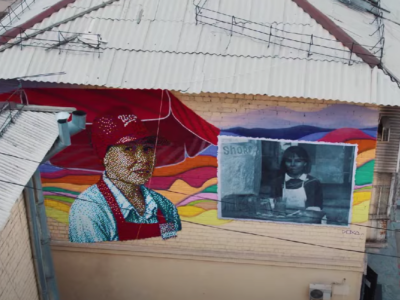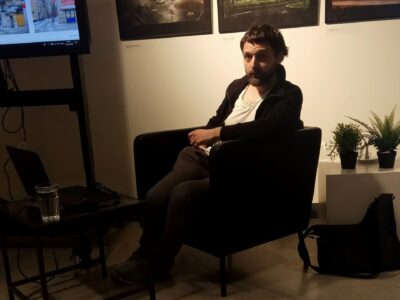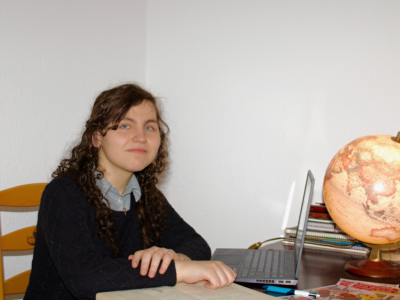This post is part of our special coverage Caucasus Conflict Voices.
The free flow of information between Armenia and Azerbaijan since independence is obviously problematic given the still unresolved conflict over Nagorno Karabakh, but can new media move in to fill the gap? With the mood in both countries as uncompromising as ever, and perhaps even worse, the task at hand is not going to be easy for those involved in peace-building initiatives, but there is potential.
This is especially true given the level of propaganda and misinformation often evident in the media of both countries, leaving alternative methods of delivering information and news sorely needed. One example of this comes in the form of a joint Internews-Conciliation Resources project aimed at encouraging dialogue through short films produced by young journalists in Armenia, Azerbaijan, and Nagorno Karabakh.
In the early 1990s Armenians and Azerbaijanis fought a bitter war over the disputed region of Nagorny Karabakh. More than 25,000 people were killed and up to a million displaced from their homes.
[…]
In 2006 Conciliation Resources launched a unique initiative called Dialogue Through Film to try to build some bridges across the conflict divide. The idea was to give young people in Azerbaijan and Nagorny Karabakh a chance to talk directly to each other by helping them make short films about their lives.
[…]
The result is a series of films charting the hopes, fears, sadness and humour of people living with the day-to-day consequences of conflict.
Technically speaking, the project itself is not one that embraces new or social media, but with national television stations in Armenia and Azerbaijan unwilling to show reports from the other side, the only medium through which to distribute the materials is the Internet besides occasionally scheduled screenings to small audiences. Nevertheless, even if all the films are not available online, many now are.
In Swept Away by Life, for example, Internews Armenia looks at life in Lachin, once inhabited by at least 20,000 ethnic Azeris and Kurds, but now renamed Berdzor by Armenians who took it in 1992 to create a strategic land link between Karabakh and Armenia proper. The town is now mainly inhabited by a few thousand socially vulnerable families from Armenia who relocated with the promise of financial assistance, land and livestock.
The documentary paints a very frank and bleak picture of life in the disputed town even though Armenia considers it vital for communication with Karabakh in the event of any peace deal. In a touching intro, however, it starts (and also ends) with a refugee from Baku reading aloud a letter from her former neighbors in the Azerbaijani capital.
[Part II of Swept Away by Life is here]
In Citizenship: Refugee, again by Internews Armenia, the focus is on yet another disputed town considered by both sides to be of considerable cultural significance in their own selective history. Shusha, known to Armenians as Shushi, was a majority-Azerbaijani town when the war broke out, but is now inhabited by less than 2,000 ethnic Armenian refugees forced to flee from Baku and elsewhere in 1990.
[Part II of Citizenship: Refugee is here and Part III is here]
Meanwhile, on the other side of the 1994 ceasefire line, Internews Azerbaijan examines the plight of IDPs from Shusha and focuses on the life and thoughts of one child, Musa, in particular. Despite not even being born with the war between Armenia and Azerbaijan was put on hold, the film illustrates how the conflict is even kept alive at schools over 16 years later.
[Part II of Musa is here]
Yet, in each of the documentaries there are moments when both sides show that they remember how Armenians and Azerbaijanis once lived together side by side in peace. However, despite such examples of bringing back the conflict to the human level, neither seems willing to compromise and both appear prepared to fight again in the event of a new war.
Nevertheless, in a film focusing on members of the Dalga Youth Movement, concerns relate to democracy in Azerbaijan, and discussion is even conciliatory when it comes to talk of peace with Armenia. “[…] unfortunately in both countries these enemy stereotypes have developed and will continue to develop,” says one young woman. “These […] have got to disappear [… in order to] achieve peace […].”
Although each film looks at the conflict from just one side, they are important for conveying that perspective to the other. However, deprived of time on air, the number of people who have seen them is very low. The number of views for the YouTube videos on the Internews Armenia site, for example, vary between a few dozen to a few hundred each in over 12 months.
The time limitation for videos, forcing the films to be cut up, is also unhelpful and illustrates the need to consider alternative video hosting options, including those such as DotSub which allow subtitles in additional languages to be added to the same source file. More importantly, perhaps, this demonstrates the need for a clearly defined new and social media strategy.
True, the videos have since been uploaded complete to Vimeo, although the higher bandwidth requirements makes them more difficult to view in countries with low Internet connection speeds such as Armenia and Azerbaijan. The number of views is also incredibly low, with What Do We Want having only two in as many months at time of writing.
This post is part of our special coverage Caucasus Conflict Voices.







8 comments
Incidentally, Conciliation Resources are aware of the need to look at new and social media to disseminate such work and contacted me a few months ago to ask if there wasn’t some way to include these videos on Global Voices.
Now, having been reminded about them by Azerbaijani blogger Arzu Geybullayeva, here’s a first post. Also, interestingly enough, if the first part of Citizenship: Refugee managed to attract 269 views on the Internews channel, its duplication elsewhere attracted 24,942 at time of writing.
Therefore, if used correctly, new and social media can increase the reach of such work, something especially important given the media environment in both countries.
BTW: I’ve used the YouTube videos for this post because Vimeo is too much of a strain on local connections in Armenia. Most users fortunate to have ADSL or Wimax are still accessing at 256k/sec, and even when mine increases to 512 k/sec from midnight to 8am, viewing videos on Vimeo is still an incredibly long and tedious process. However, for those of you with faster connections, you can access the entire series of films at http://vimeo.com/dtfcr.
well done!!!
Since writing this post, Laurence Broers, Caucasus Program manager for Conciliation Resources has been in touch pointing me in the direction of three other films made as part of the project which have been posted on Vimeo:
http://vimeo.com/12366582
http://vimeo.com/12370860
http://vimeo.com/12393527